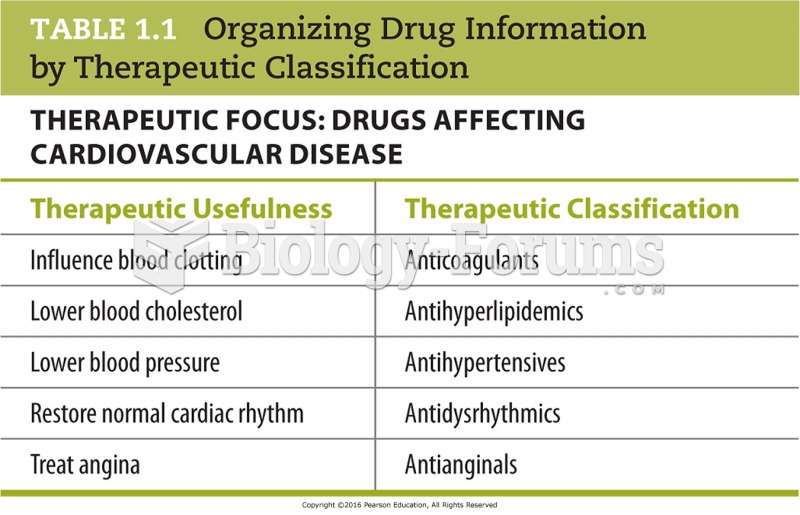|
|
|
As the western states of America were settled, pioneers often had to drink rancid water from ponds and other sources. This often resulted in chronic diarrhea, causing many cases of dehydration and death that could have been avoided if clean water had been available.
Hyperthyroidism leads to an increased rate of metabolism and affects about 1% of women but only 0.1% of men. For most people, this increased metabolic rate causes the thyroid gland to become enlarged (known as a goiter).
The calories found in one piece of cherry cheesecake could light a 60-watt light bulb for 1.5 hours.
About 100 new prescription or over-the-counter drugs come into the U.S. market every year.
Drying your hands with a paper towel will reduce the bacterial count on your hands by 45–60%.







